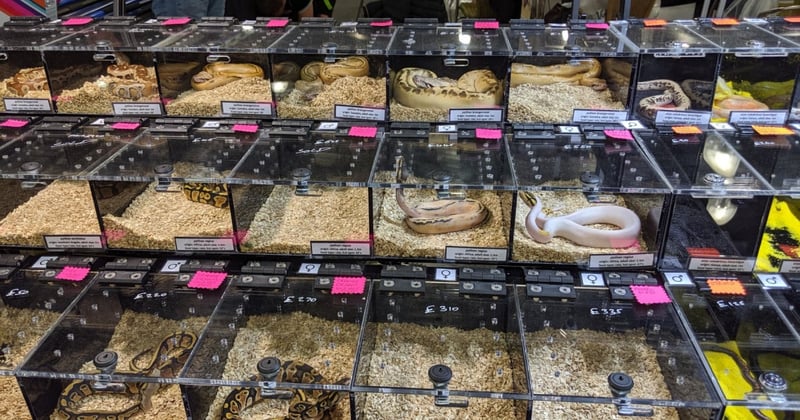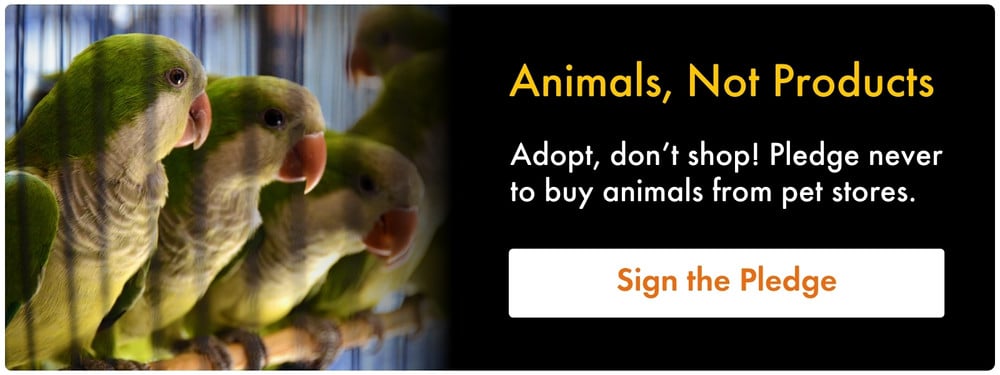
What Is the Deal with Reptile Shows Opening Back Up?
You may have seen World Animal Protection in the news in recent weeks urging exhibition centers to no longer host reptile shows, where live wild animals are handled and sold as exotic pets (1,2). It seems shortsighted that in the grip of a national pandemic, that can most likely be traced back to a wild animal market in China, venues in this country would consider hosting wild animal markets with animals that are known vectors of disease.
Reptiles—such as snakes and turtles—carry and shed bacteria such as Salmonella that frequently cause infections in people, and can even lead to death, especially in people with weak immune systems. According to the U.S. Centers for Disease Control and Prevention (CDC) you can become infected even by healthy reptiles and even if you don’t touch the animals because Salmonella germs in feces can contaminate anything they touch, including anything in their environment like aquariums and food dishes.
Every year the CDC reports outbreaks of diseases caused by reptiles and small mammals. The agency warns against bringing reptiles into your homes if you have young children, noting that children under five represent 41% of patients sickened by Salmonella outbreaks linked to reptiles. It seems totally at odds then that there are no age restrictions at most reptile expos.
Suffering in Silence
In 2019, World Animal Protection investigators visited multiple exotic pet events to observe the conditions of the animals and documented poor animal welfare. The investigation raised a number of serious issues at each expo we visited. They included:
- A lack of concern for the spread of reptile-borne bacteria: although some vendors had anti-bacterial soap on their tables, use of it was not encouraged or only encouraged before handling an animal.
- Inadequate space during transportation: animals are typically transported in small, clear plastic containers stacked one on top of the other.
- Inadequate space during events: animals typically remained in the same plastic containers used for transportation for the duration of the event. Snakes were regularly observed bending themselves to fit within the four sides of the container in an effort to stretch as long as possible, while other animals were observed desperately trying to find a way out.
- Overcrowding of animals: even when placed in larger tanks or aquariums, geckos, lizards, and other reptiles were observed to be grossly overcrowded, with as many as 12 animals piled on each other, increasing the risk of injury and illness.
- Unhealthy animals: animals available for sale were observed to be malnourished, injured, or sick.
Animal welfare
Aside from the threats to human health posed by reptiles, large numbers of these wild animals will die within their first year of captivity due to the rigors of transport, the stress of confinement and handling, and poor animal husbandry. While animal mortality rates are subject to debate, estimates suggest that up to 75% of reptiles die in their first year in someone's home. Given the huge volumes of animals being sold at these events, that equates to thousands of unnecessary deaths as a result of their captivity.
Reptile suffering includes acute stress, chronic debilitation, and other medical problems such as calcium deficiency and associated metabolic bone disease; being unable to hide from perceived threats; trauma due to escape attempts; and inability to explore, properly regulate body temperature, and eat natural and balanced diets.
Whether bred in captivity or born in the wild, all reptiles are wild animals and they have the capacity to experience the same emotions and pain as cats and dogs. In recent years, scientists have studied different aspects of sentience in reptiles: anxiety, distress, excitement, fear, frustration, pain, stress, and suffering.
Threat to native species
While many thousands die in captivity, others may be dumped outside once the novelty of possessing them wears off, presenting a threat to native wildlife. Invasive species are the second leading cause of animal population decline and extinction worldwide. They have contributed directly to the decline of 42% of threatened and endangered species in the United States and cost an estimated $120 billion each year to detect, collect, and remove.
Many states, such as New York, Colorado, and Alaska, do not allow the keeping of reptiles because of the threat they pose to local wildlife. Florida specifically bans several species of python specifically because of its well-publicized invasive species problems and recently added green iguanas and tegus to the list.
Breeding these animals in captivity does nothing to help wild animal populations and more than likely contributes to their demise. Sixty percent of wild species have been lost in the last fifty years. We need to fundamentally change our relationship with wild animals, or there will be none left.
At a time when most of us are paying close attention to the CDC’s advice around preventing the spread of COVID-19, it makes sense to also follow their warnings about the disease potential of reptiles. The emergence of COVID-19 has been a wake-up call to us all about how our poor treatment and exploitation of wild animals can have serious negative impacts on human health. And we’re learning about new risks every day. Aside from the zoonotic disease risk, people have to ask themselves if they want to attend an event which is largely indoors, full of people from different areas, and contributes to the suffering of animals.
